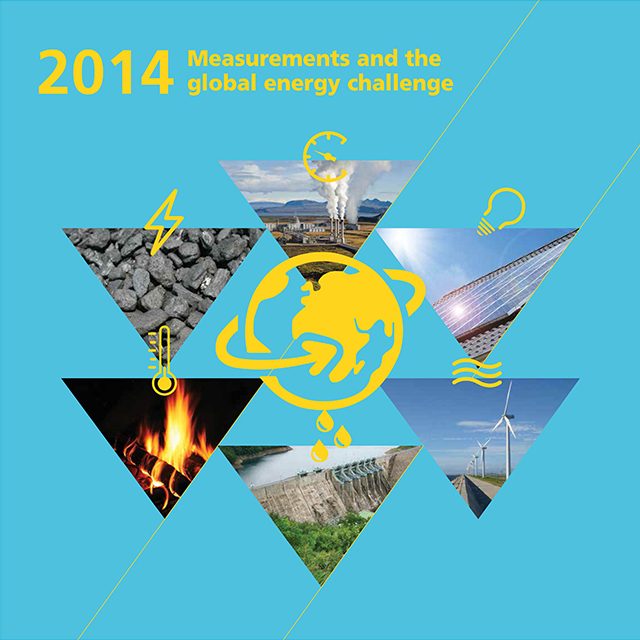SUMMARY
This is AI generated summarization, which may have errors. For context, always refer to the full article.

MANILA, Philippines – No, dear reader, “metrology” is not a misspelled word. It isn’t a typo for meteorology. That branch of science deals with the processes of the atmosphere, especially as a means of forecasting the weather.
Metrology, on the other hand, is the science of measurement. The word comes from the Greek words metron (“measure”) and logos (“study”).
May 20 is World Metrology Day. Here are some fast facts about this annual event and the science of measurement.
1. May 20 is the anniversary of the signing of the Meter Convention in Paris in 1875.
The Convention is a treaty that provides the basis for a coherent measurement system worldwide. It marked the beginning of formal international collaboration in metrology.
The Convention created the International Bureau of Weights and Measures (Bureau International des Poids et Mesures, or BIPM). The BIPM is an intergovernmental organization. It acts in matters of world metrology, particularly concerning the demand for measurement standards of ever-increasing accuracy, range and diversity, and the need to demonstrate equivalence between national measurement standards.
The Convention remains the basis of international agreement on units of measurement. The BIPM has 56 Member States and 39 Associate States. The Philippines is an Associate State.
2. Metrology is everyone’s business.
Measurement science is not for scientists only. We all make measurements every day of our lives. Think how often you check the time on your watch, weigh fruits and vegetables at the market, or glance at the taxi’s meter or the car’s speedometer.
We all depend on “an intricate network of services, suppliers, and communications that rely on metrology for their efficient operation,” states the BIPM. Four examples follow:
- The economic success of nations depends upon the ability to manufacture and trade precisely made and tested products and components.
- Satellite navigation systems and international time correlation make accurate location possible – allowing the networking of computer systems around the world, and permitting aircraft to land in poor visibility.
- Human health depends critically on the ability to make accurate diagnosis, in which reliable measurement is increasingly important.
- Consumers have to trust the amount of gasoline delivered by a pump.
3. “Measurements and the global energy challenge” is the theme for this year’s World Metrology Day.
The world faces a growing global energy challenge over the coming decades. The demand for energy will grow. At the same time, there is a need to curb greenhouse gases and to secure a greater mix of energy sources, including renewables. Demands for improvements in efficiency of energy generation, transmission, and use are constantly being pushing technology to the limit.
To meet the challenge, we need to improve our ability to measure a whole series of parameters. Here are three examples:
- More accurate measurement of the manufacturing temperature or the surface form of a turbine blade will lead to improvements in efficiency.
- Better measurements of power quality will help stabilize transmission grids.
- More complex electrical power metering is needed to ensure that the energy we buy is correct.
4. The National Metrology Act (Republic Act 9236) was enacted in 2003.
In the Act, the state declared its policy “to facilitate the development of scientific and technical knowledge and progress in the national economy by encouraging the standardization and modernization of units and standards of measurements to adapt to the needs of the times, thereby complying with international standards and protecting the health, interest and safety of every consumer and his environment from the harmful effects of inaccurate or false measurements.”
5. The National Metrology Laboratory of the Philippines (NML) is the national metrology institute of the Philippines.
As such, the NML is tasked with carrying out the technical, calibration and laboratory functions to effectively implement the provisions of the National Metrology Act. It is responsible for establishing and maintaining national physical standards for basic and derived quantities such as mass, length, temperature, time interval, voltage, and resistance.
The NML is also tasked with disseminating these standards to the general public.To celebrate World Metrology Day, it invites everyone to an open house on May 20, 2014, 9 am to 11 am and 2 pm to 4 pm.
Guests may visit the organization’s laboratories in Taguig City, consult technical staff for free, and avail themselves of discounted rates for calibration and testing services. For more information, you may call telephone 837 2071, local 2272. – Rappler.com
Dinna Louise C. Dayao (dinnadayao@gmail.com) is a writer and editor. She organized the Change.org petition asking President Aquino to require all public officials to take public transit at least once a month.
Add a comment
How does this make you feel?
There are no comments yet. Add your comment to start the conversation.